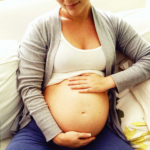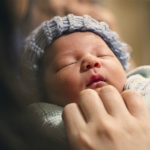Since their introduction in the 1990s, atypical (second-generation) antipsychotics have replaced typical (first generation) antipsychotics as the first-line treatment for schizophrenia and related psychotic disorders. These drugs are widely used by reproductive age women across many other disease states including bipolar disorder, major depression and anxiety disorders as either primary or adjunctive treatments.
Studies on the prevalence of the use of these newer medications in pregnancy are limited. Recently, in one of the largest population-based studies to date involving over half a million pregnant women in the United States (Toh 2013), investigators estimated the prevalence of atypical antipsychotic use during pregnancy. All live births to women aged 15-45 years were identified over a 6 year period (2001-2007) from 11 US health plans participating in the Medication Exposure in Pregnancy Risk Evaluation Program. Prenatal exposure to both atypical and typical antipsychotics was ascertained from health plan pharmacy dispensing files.
Among the 585,615 qualifying deliveries, 0.72% (4,223) were to women who received an atypical antipsychotic and 0.09% (548) were to women receiving a typical antipsychotic. Over the six year study period studied, there was a dramatic 2.5 fold increase in the use of atypical antipsychotics from 0.33% [95%CI 0.29%-0.37%] in 2001 to 0.82% [95%CI 0.76%-0.88%] in 2007. In contrast, the use of typical antipsychotics remained stable (see figure).
While these estimates of prevalence of atypical antipsychotic use in pregnancy are relatively small (i.e., less than 1%), the observed prevalence is higher than previous estimates of 0.05% in a single site US study (Wichman 2009) and 0.02% in the Swedish Medical Birth Register (Reiss 2008). These varying estimates may be due to differences in the study population as well as secular trends in prescribing these agents in different countries. However, one of the strengths of this current study is that the prevalence is derived from a diverse population.
Given these data suggesting the growing use of atypical antipsychotics among pregnant women, reliable reproductive safety data regarding the use of these medications are remarkably still lacking. As a result, clinicians lack sufficient evidence to evaluate the risks and benefits of using atypical antipsychotics to treat psychiatric disorders during pregnancy. The existing reproductive safety data on atypical antipsychotics is from relatively small, observational case studies and case series or industry reports.
The primary reason for this sparse amount of data is the lack of a systematic mechanism for collecting such information. Pregnancy registries have emerged as a rapid and systematic method to collect data that will provide information on whether an increased risk of major malformations exists with exposure to a particular medication compared to the baseline rate of major malformations in the general population. Over the past decade, several registries have emerged to evaluate the reproductive safety of a broad range of drugs including medications used for HIV, cancer, epilepsy, and diabetes. Other registries have been created specifically for psychotropic medications, including bupropion, fluoxetine, and lithium. More recently, the National Register of Antipsychotic Medication in Pregnancy (NRAMP) was established and is currently enrolling women from Australia and New Zealand (Kulkarni 2008).
The National Pregnancy Registry for Atypical Antipsychotics
Given the void of reproductive safety information, The National Pregnancy Registry for Atypical Antipsychotics, modeled after the highly successful North American AED Registry, was launched in 2008. Based at Massachusetts General Hospital in Boston, the National Pregnancy Registry for Atypical Antipsychotics, (www.womensmentalhealth.org), is the first hospital-based pregnancy registry for atypical antipsychotics in North America which systematically and prospectively evaluates rates of malformations among infants exposed in utero to atypical antipsychotics including aripiprazole, clozapine, olanzapine, paliperidone, quetiapine, risperidone,ziprasidone, and asenipine. In addition, the Registry also collects information on maternal and infant health outcomes associated with use of atypical antipsychotics during pregnancy.
How Can Patients Participate in the Registry?
We encourage clinicians to cooperate and support these efforts by encouraging their patients to enroll. Participation in the Registry involves 3 brief phone interviews over a period of approximately 8 months. We also request copies of the medical records of both mother and child as part of study participation. The Registry is a patient-initiated study. Therefore, if you are interested in referring someone to the Registry, please have your patient call 1-866-961-2388 or email us at registry@womensmentalhealth.org. If you have other questions about the Registry, please also feel free to contact us. More information about the Registry can be found at www.womensmentalhealth.org
We appreciate the effort of clinicians who have referred patients to participate in the Registry thus far. We also wish to thank the many patients who read our blog and who have participated in the National Pregnancy Registry for Atypical Antipsychotics.
Adele Viguera, MD
Cohen LS, Viguera AC, et al. The National Pregnancy Registry for Atypical Antipsychotics: Effects of Fetal Exposure on Risk for Congenital Malformations and Maternal and Newborn Outcomes [abstract]. In: 53rd Annual New Research Approaches for Mental Health Interventions; 2013 May 28-31. Hollywood, Florida.
Kulkarni J, McCauley-Elsom K, Marston N, et al. Preliminary findings from the National Register of Antipsychotic Medication in Pregnancy. Aust N Z J Psychiatry 2008;42:38-44.
Reis M, Kallen B. Maternal use of antipsychotics in early pregnancy and delivery outcome. J Clin Psychopharmacol 2008;28:279-288.
Toh S, Li Q, Cheetham TC, Cooper WO, et al. Prevalence and trends in the use of antipsychotic medications during pregnancy in the U.S., 2001-2007: a population-based study of 585,615 deliveries. 2013;16(2):149-157.
Wichman CL. Atypical antipsychotic use in pregnancy: a retrospective review. Arch WomensMent Health (2009); 12:53-57.








Leave A Comment